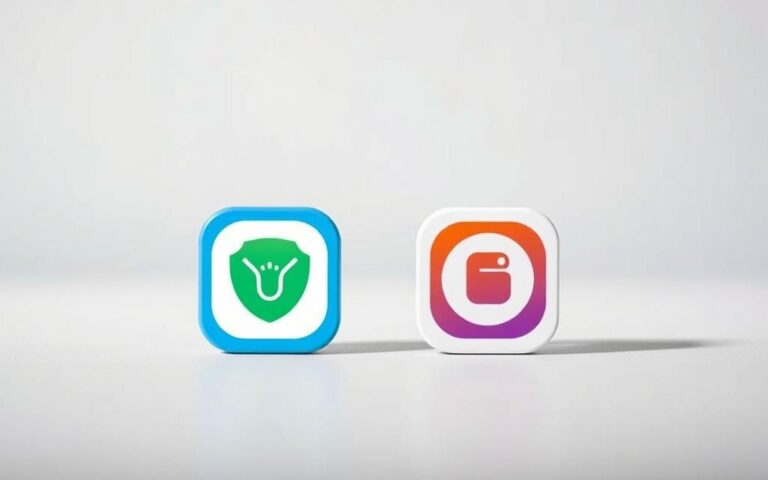Did you know over 500 million users have tried Duolingo? It’s one of the top language learning apps globally. Duolingo promises to make learning languages fun and effective. But does it really work?
For 30 days, we tested Duolingo to find out. We looked at user experiences, success rates, and its place in the e-learning world. Let’s see if Duolingo lives up to its claims.
Introduction to Exam Prep Apps
Exam prep apps are key tools for students aiming to do well in school. They use technology to offer interactive content for test prep. With more online learning, the need for good educational apps has grown.
What Are Exam Prep Apps?
Exam prep apps are digital tools for test prep. They have features like quizzes, video tutorials, and analytics to track progress. They’re great for studying anywhere, anytime, fitting into busy schedules.
These apps are designed to meet individual needs, making learning personal. They help users set their own pace, making learning more effective.
Benefits of Using Exam Prep Apps
Exam prep apps offer many benefits. They provide learning experiences tailored to each user. This means studying can be done from anywhere, making prep more accessible.
Interactive content helps learners remember more. This is a key feature of many online study apps. Overall, these tools make learning better on electronic learning platforms.
Overview of Duolingo
Duolingo is a top app for language learning. It uses games and structured lessons to make learning fun. Duolingo offers a wide range of exercises to improve language skills.
It also tracks progress, making learning a rewarding experience. Duolingo is known for its unique approach to language learning, appealing to all ages.

The Science Behind Duolingo
Duolingo uses educational theories to help users learn languages. It combines different learning methods to keep users engaged. These methods are designed to fit each person’s learning pace.
Learning Methodologies Used
Duolingo uses spaced repetition to help users remember words and phrases. This method makes sure you remember what you learn. It also uses adaptive learning to adjust lessons based on how well you do.
This way, Duolingo meets the needs of all learners. It creates a welcoming place for everyone to learn.
Gamification in Language Learning
Duolingo makes learning a language fun with gamification. It adds rewards, challenges, and tracking to keep you interested. This makes learning feel like a fun adventure, not a task.
The mix of gamification and learning strategies makes learning enjoyable. It helps users learn new words and grammar with excitement.
Setting Up for Success on Duolingo
To get the most out of Duolingo, start by creating an account. It’s fast and easy, giving you instant access to its many features. Once you’re in, you’ll find lots of tools to make learning fun and effective.
Creating an Account
Creating an account is simple. Just go to Duolingo’s website or app, enter your email, and choose a password. You can also log in with your social media accounts for even easier access.
Navigating the App
After signing up, using the app is a breeze. Pick your language and set daily goals. The app’s design keeps you coming back, making learning a part of your daily routine.
Personalizing Your Learning Experience
Duolingo lets you tailor your learning to fit you. Choose themes, learning styles, and how fast you want to learn. This way, you enjoy learning and see real progress, making Duolingo a great tool for language learning.
Our 30-Day Duolingo Challenge
Starting a 30-day challenge with Duolingo is a great way to learn new language skills. It uses a cool online training platform. People had different first thoughts about the app’s design and how easy it was to use.
Many liked the daily goals in the app. These goals helped them learn a new language step by step.
Initial Impressions
When people first tried the app, they felt both excited and unsure. They thought the app was easy to use, making learning a language fun. The mix of games and learning kept them interested from the start.
Daily Goals and Structures
Having daily goals was key to keeping up the pace all month. The app made it simple to start lessons without feeling overwhelmed. Reminders helped users stay on track, building good habits.
This structure made learning more enjoyable and helped users stick with it.
Tracking Progress
Seeing how you’re doing was a big plus of the challenge. The app showed users how much they’d learned and how well they retained it. This made it clear how far they’d come, giving them a sense of accomplishment.
Assessing Vocabulary Acquisition
Looking at Duolingo’s impact on learning new words over 30 days is key. We need to compare pre-test and post-test scores. This helps us see how well the app works and how well people remember what they learned.
Pre-test vs. Post-test Results
People showed big gains in their word knowledge after taking tests. The first tests were simple, but the second ones were tougher. This shows Duolingo really helps improve vocabulary skills.
| Test Type | Score Before (Pre-test) | Score After (Post-test) | % Improvement |
|---|---|---|---|
| Basic Vocabulary | 60% | 85% | 25% |
| Conversational Vocabulary | 55% | 80% | 25% |
| Technical Vocabulary | 50% | 75% | 25% |
Types of Vocabulary Learned
During the 30 days, users learned many kinds of words. The app covers:
- Conversational Terms: These are key for everyday talk.
- Common Phrases: Great for understanding in everyday chats.
- Technical Jargon: For those with special interests or jobs.
This wide range of vocabulary helps learners remember and use words in real life. It shows Duolingo’s program is designed for lasting learning and practical use.
Understanding Grammar and Sentence Structure
Learning grammar is key to mastering any language. Duolingo’s exercises mix grammar with fun sentence structures. This makes learning language mechanics easier and more fun. It shows how digital tools can be better than old-school methods for learning grammar.
Grammar Exercises in Duolingo
Duolingo has many exercises to help with grammar. You’ll find questions, translations, and fill-in-the-blanks. These activities focus on different grammar parts. The app also gives instant feedback, helping you learn faster.
Comparison with Traditional Methods
Learning grammar through digital tools versus old methods is different. Textbooks give lots of info but might not be as engaging. Duolingo, on the other hand, makes learning fun and interactive. This leads to better retention than just reading.
| Aspect | Duolingo | Traditional Methods |
|---|---|---|
| Engagement Level | Interactive exercises | Passive reading |
| Feedback | Immediate corrections | Delayed feedback |
| Practical Application | Contextual understanding | Theory-heavy |
| Accessibility | Available on devices | Physical materials required |
Duolingo and old methods have their own strengths and weaknesses. Traditional methods give solid basics. But, digital tools like Duolingo might help you understand sentence structure better.
Engaging with the Community
Being part of the Duolingo community makes learning better. It creates a supportive space where people can share tips and motivate each other. This helps learners face challenges and enjoy learning more.
Duolingo Forums and User Interaction
Duolingo’s forums are a lively place for users. People from all over talk about their learning journeys. They ask questions, share tips, and celebrate their wins.
These interactions offer inspiration and resources not found in the app. They build a sense of belonging and keep learners motivated.
Impact of Community Support
The Duolingo community boosts learning. Users share insights that help understand language better. This makes learning more fun and keeps learners motivated.
Sharing successes creates a positive vibe. It encourages everyone to keep learning new language skills.
Challenges Faced During the Month
Many learners face challenges while using Duolingo. It’s important to know these obstacles to improve your learning. Overcoming these can help you stay motivated and enjoy learning a new language.
Common Frustrations
Users often report specific frustrations with Duolingo. Here are some common ones:
- Technical glitches that disrupt learning.
- Repetitive practices that can feel monotonous.
- Difficulty grasping certain language rules that can feel overwhelming.
These challenges can make learning less enjoyable and less effective. It’s key to recognize their impact to create a better learning environment.
Motivation Levels
Motivation in language learning can change for many reasons. When we hit obstacles, our motivation can drop. It’s important to keep our motivation up to overcome these challenges. Here are some ways to do that:
- Set achievable daily goals to feel accomplished.
- Join the community through forums to share and learn.
- Remember why you started learning the language.
By tackling these challenges, we can improve our learning experience. This helps us keep a lasting passion for learning new languages.
Final Thoughts on Duolingo’s Effectiveness
As the 30-day challenge ends, it’s time to think about Duolingo’s success. This review looks at Duolingo’s good points and areas for improvement. It shows how well it helps people learn new languages.
Key Strengths of the App
Duolingo is great for many reasons. Its easy-to-use design and fun features make learning fun. You can earn points and level up, which keeps you motivated.
The app also has a strong community. Users can connect, share, and support each other. This makes learning more enjoyable.
Areas for Improvement
But, Duolingo isn’t perfect. It introduces languages well but doesn’t go deep into advanced topics. Some users want more detailed explanations and examples.
Also, while the community is helpful, tech support can be slow. This can make users unhappy at times.
When we look at learning apps, it’s important to balance fun and depth. Duolingo needs to listen to users to improve. This will help it grow and get better.
Recommendations for Using Duolingo
To get the most out of Duolingo, it’s important to use it wisely. Start by setting goals you can reach. Try to practice a bit every day, not too much at once. This keeps you motivated and helps you make steady progress.
Also, using Duolingo with other learning tools can make a big difference. Listen to language podcasts or join conversation groups. This way, you can use what you learn in real life.
Looking into other apps like Babbel and Rosetta Stone is also a good idea. Babbel helps with talking and grammar, while Rosetta Stone focuses on understanding through immersion. Trying out different apps can help you find what works best for you.
Using Duolingo with other apps is a great way to learn a language. It mixes different learning methods and resources. This approach can make learning faster and more effective. Staying committed to learning can lead to a fulfilling experience.



